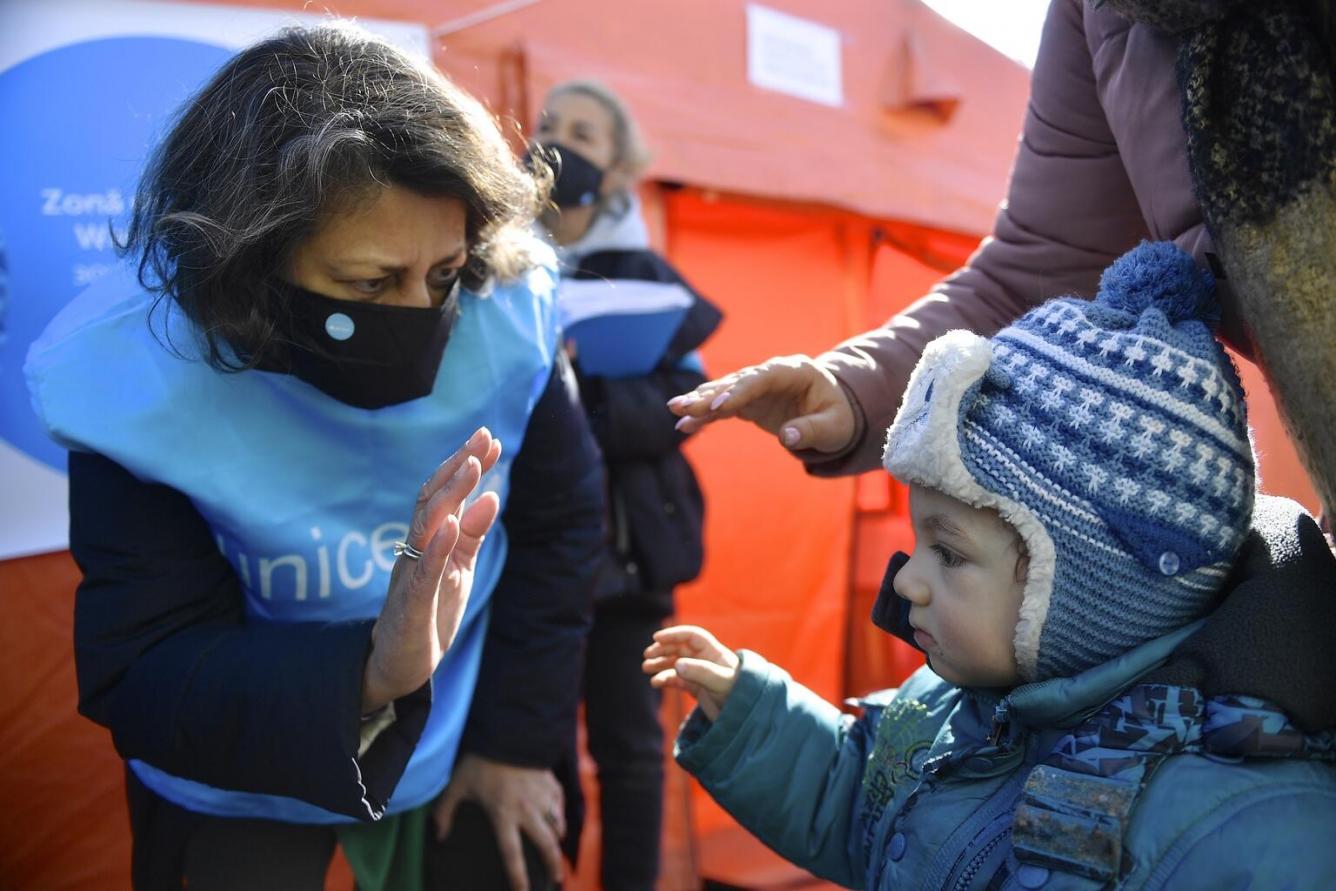3 things to know about Blue Dots
Like all children driven from their homes by war and conflict, Ukrainian children arriving in neighbouring countries are at significant risk of violence, sexual exploitation, and trafficking. They are in desperate need of safety, stability and child protection services, especially those who are unaccompanied or have been separated from their families.
UNICEF teams are working alongside the United Nations High Commissioner for Refugees (UNHCR) and other partners to assist and mobilize support for displaced and refugee children and families escaping to Moldova, Poland, Romania and Belarus.
What are Blue Dot hubs?
Jointly established by UNICEF and UNHCR together with local authorities and partners, ‘Blue Dots’ are safe spaces along border crossings in neighbouring countries that provide children and families with critical information and services. Blue Dot hubs provide refugees with critical information and practical support to help them in their onward journeys. They identify and register children travelling on their own and connect them to protection services, and also offer referral services to women, including for gender-based violence.
For children, Blue Dot hubs provide a safe, welcoming space to rest, play and simply be a child, at a time when their world has been abruptly turned upside down in fear and panic, and they are facing the trauma of leaving family, friends and all that is familiar.

Where will they be located?
UNICEF and partners currently plan to provide hubs across Poland, Moldova, Romania, Belarus, Hungary and Slovakia. They will be sited along entry points of major refugee arrivals, registration sites and some urban centres. Blue Dot Hubs are organized in close coordination with national and local authorities in selected strategic sites, in close collaboration with UNHCR and other protection partners. Where possible, Blue Dot hubs will build on and bring together existing services; otherwise, a new hub will be created to deliver these vital services.
What support can children and women access?
Blue Dot hubs offer essential services delivered by UNICEF and other agencies, including:
- Information and advice desks where families on the move can find out about the support and services available to them as refugees, including from host countries, humanitarian agencies, civil society organizations and others. Families are also made aware of their rights under international humanitarian law.
- Child-friendly spaces, allowing children to rest, play and benefit from structured activities and psychosocial support from trained staff, with separate spaces/activities for young children and adolescents to meet their unique needs.
- Family reunification services to restore and maintain contact among family members and ensure the safety of children. These services also provide information on how to best prevent the separation of families travelling together.
- Counselling and psychosocial support for both children and parents/caregivers who may be facing considerable trauma and stress from their experiences. Psychologists, social workers and other trained professionals are on hand to identify children who might need further support, especially unaccompanied or separated children.
- Referral services to connect refugees who have suffered violence or are experiencing health conditions and other circumstances that require specialized support. Blue Dots also enable UNICEF and partners to identify vulnerable children and women and refer them to specialized services. The vulnerable may include families, single mothers or children at risk, such as unaccompanied children, those with disabilities or illnesses, cases of suspected trafficking, and survivors of sexual or gender-based violence.
- Safe areas to sleep where people with specific needs can rest for a short time or be referred to longer-term emergency accommodation.
- Emergency items (such as clothing, hygiene items, blankets) for highly vulnerable children and women, including children with disabilities.
